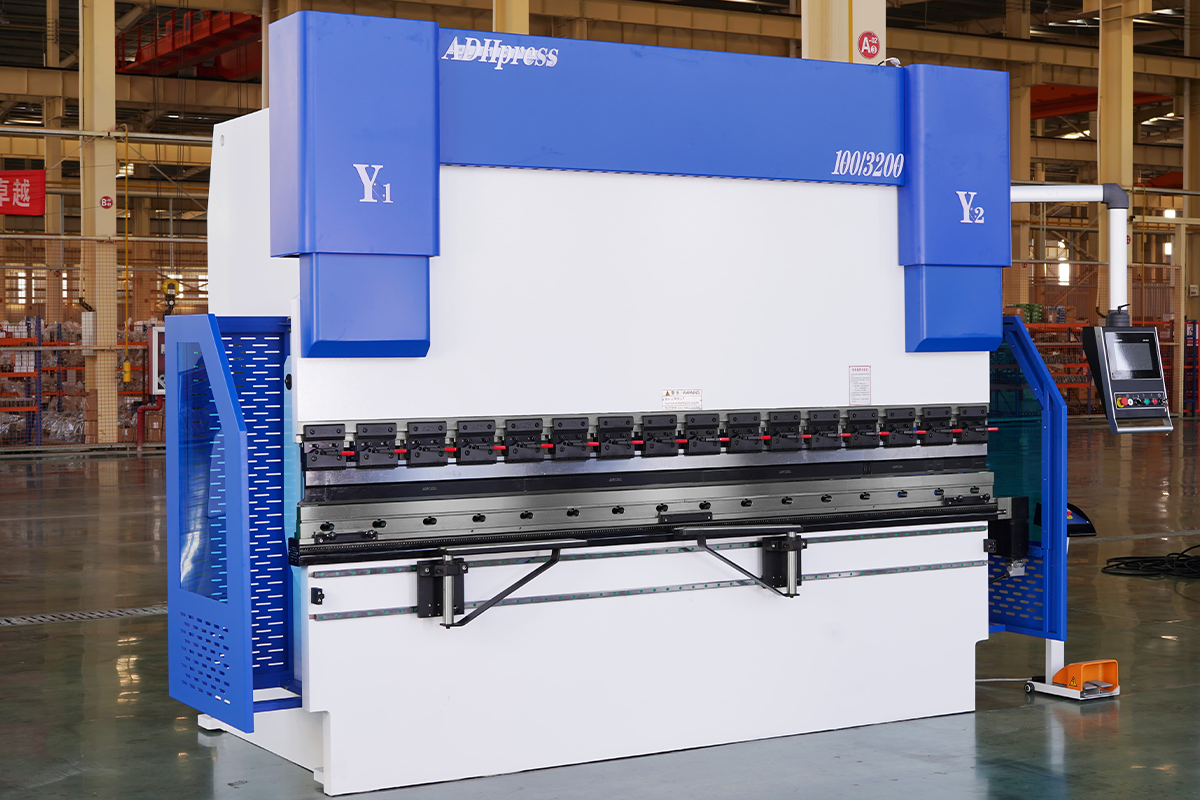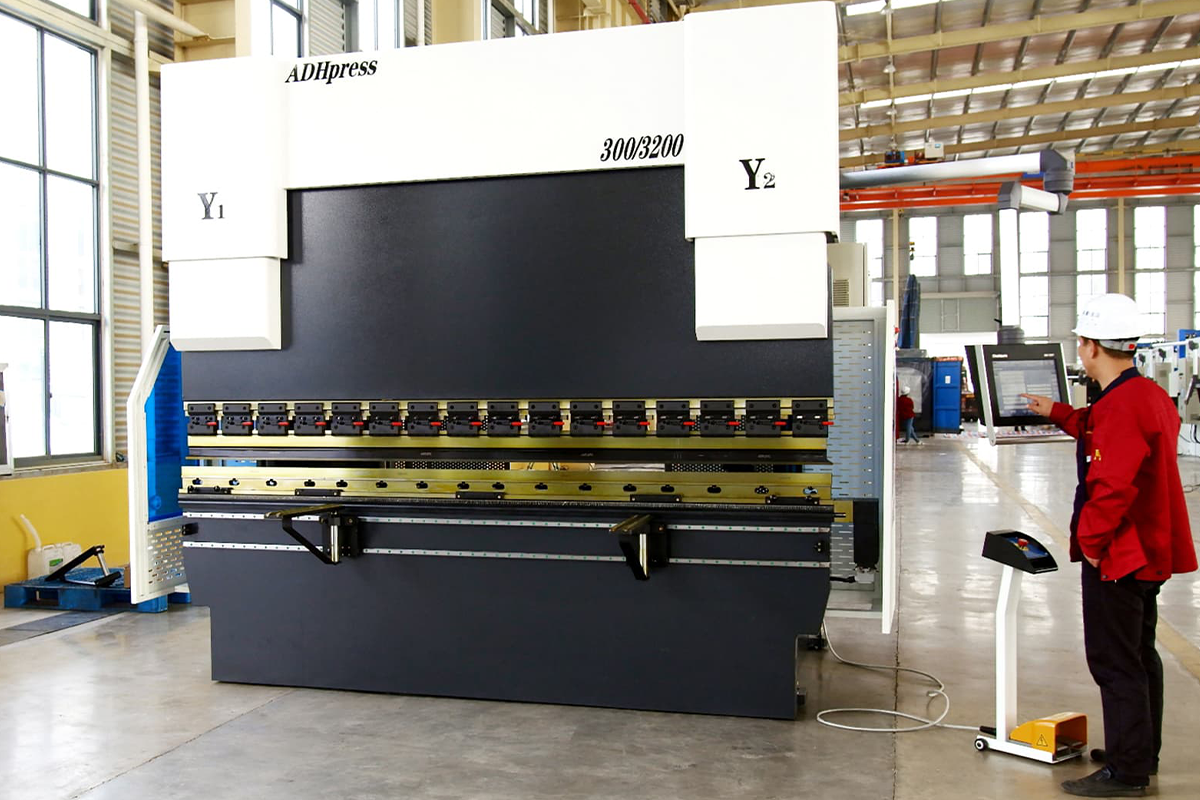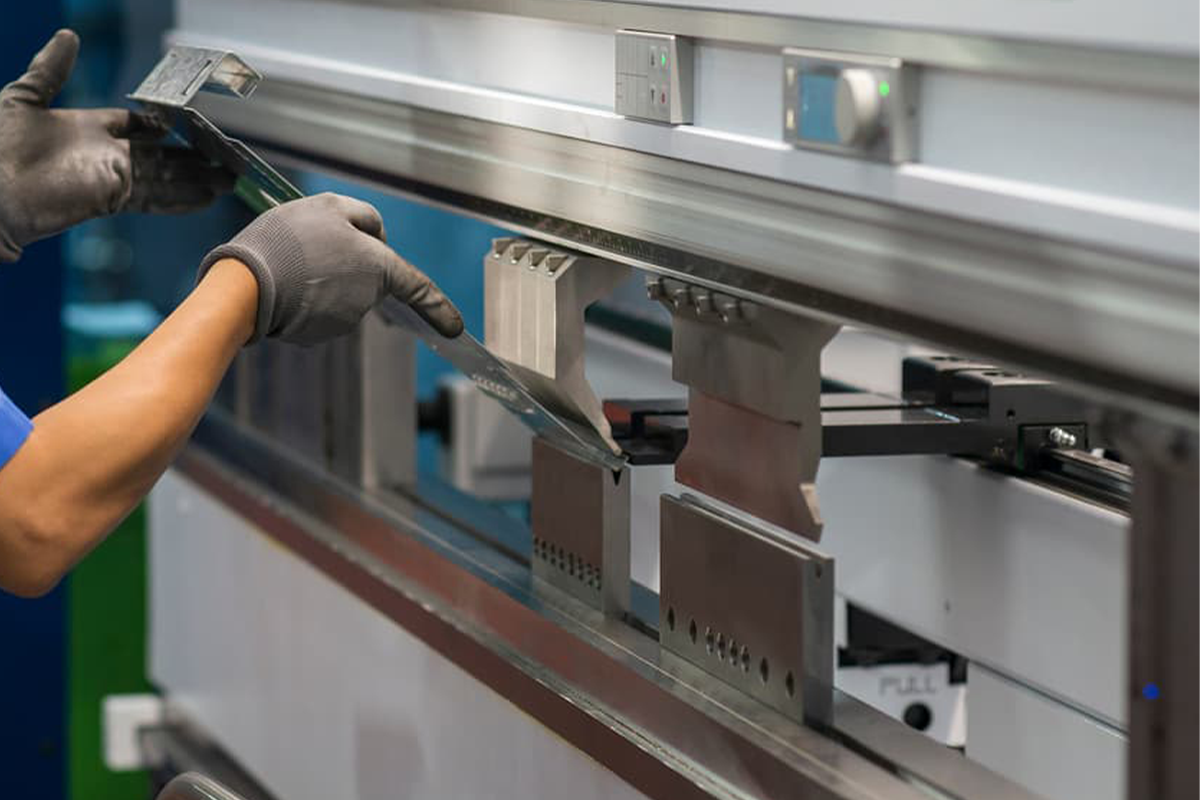Press brake is a versatile machine used for bending metal sheets. It is operated by clamping the workpiece between the top punch and bottom die, thus ensuring the bending angles and shapes. Press brake is an essential tool in metal fabrication, and features many types, including manual, hydraulic, and CNC. Each type can offer different levels of precision, accuracy, and efficiency to meet different production requirements. The force exerted by the press brake (called tonnage) is vital for achieving accurate bending, keeping accuracy, and reducing material deformation to maximum. Many factors, like tooling set, punch and die choice, and CNC controller, play a pivotal role in optimizing the bending process. Besides, the latest technological advancement has significantly improved the press brake function, allowing the manufacturers to achieve intricate bends at higher speed and precision. However, there is a common mistake during the bending process, that is “press brake†is mistakenly called “press break." This confusion seems minor but actually reflects the confusion about mechanical equipment's basic concept and function. “Brake†refers to brake or bending function, while the “break†usually refers to break or damage. Apparently, these two words have utterly different meanings under the press brake background. Press brake: this is mechanical equipment used for metal fabrication. It exerts pressure to bend the metal sheet. It uses a pair of clamps to clamp metal plates, then exerts the power by one or multiple bending tools to bend the metal sheet into the required angle and shape. This machine is important in metal fabrication, automotive, aerospace, etc. Press break: this is terminology used neither in metal fabrication nor any machine or process. “Breakâ€Â means broken or damaged in English and has nothing to do with the function of the press brake. Thus, the reference to “press breakâ€Â is often misused or misunderstood in the industrial area. When it comes to the machine used for bending metal sheets, “press brakeâ€Â is the correct use of terminology. Phonetic similarity: in English, the “brake†and “break†are approximately the same as phonetic, which confuses non-professional persons easily. Lack of professional knowledge: people unfamiliar with metal fabrication or mechanical projects may not know about the professional terminology “press brake,†thus misusing the words that sound similar. Misinformation and communication barriers: in non-professional communication, the improper use of terminology may be continuously spread, further deepening the misunderstanding. Press brake can handle many types of metal, like steel, aluminum, copper, etc. It bends the metal sheet via exerting the pressure and controlling the angle, thus generating the required shapes and sizes. The press brake is usually composed of a base, support, clamping sheet, and bending tools and achieves the working function driven by hydraulic, mechanical, and servo motors. Press brake plays an essential role in metal fabrication. It can not only achieve a straight and accurate angle bend but also can be applied to make intricate three-dimensional shapes, such as boxes, tubes, and other custom designs. This makes the press brake indispensable for metal manufacturing and fabrication and widely used in the automotive, aerospace, construction, furniture, and electronics industries. The early metal bending work mainly depended on human labor. The workers use simple tools and physical power to bend the metal sheet. This method not only consumes time and energy but also can not ensure bending precision and repeatability. With the advancement of the industrial revolution, the requirement for higher efficiency and precise metal fabrication is increasingly in demand. This stimulated the initial development of bending technology. In the early 20th century, mechanical press brakes appeared. The worker’s manual labor is strengthened by mechanical wheels and a level system, thus increasing the working efficiency and bending precision. Although this marks a noticeable advancement, these machines still need a large amount of manual operation and physical labor. In the 1970s, different types of hydraulic mechanics and hydraulic press brakes appeared. This hydraulic press brake generates bending force by using a hydraulic cylinder, which significantly improves the power and precision control during the bending process. In the 2000s, the electric press brake appeared. The key technology of press brake design includes the development of a CNC system. This system utterly transforms the industry. CNC system features higher precision and repeatability, which can program complex bending and shaping. Besides, the development of a back gauge controlled by a multiple axes computer enables the operator to position the material correctly and gradually sort the bends until done. This makes it the repeatable and complex component produced with the highest precision and speed possible. Except for technology, the design of modern press brakes has paid more and more attention to efficiency and safety operations. Many machines adopt consumption technology, which reduces energy consumption and operation costs and improves working efficiency. The safety characteristics, like emergent stop buttons, safety fences, and light curtains, have become a standard setting, which ensures the safety of operators. This machine features a simple structure and relatively low cost, and needs manual labor, which is very suitable for small-scale projects. It is mainly used in education, small craft making or repair work, and personalized and manual operators. This is the most common type of press brake, which is powered by the hydraulic system. It can produce high-quality tubes, and handle large-scale and heavy-duty metal sheets, such as shipbuilding, and large equipment manufacturing. This machine is controlled by a computer to process accurate bending operation and intricate patterns manufacturing, offering higher precision, efficiency and repeatability. It is very suitable for generating complex accessories and shapes and is used in housing manufacturing for automobiles, aerospace, and high-end electronic products. similar to hydraulic press brake, this electric press brake is powered by electric motors instead of hydraulic systems. Compared with hydraulic press brake, it is more energy saving, and low noise. The press brake basic working principle is determined by the types of the press brake: Mechanical press brake: when the machine works, the flywheel stores the energy. When the clutch is engaged, the stored energy is released. The crank mechanism rotates and pushes the punch downward. Hydraulic press brake: high-pressure hydraulic oil forces the ram to move, driving the ram and punch exerting the pressure on the material. It can control the precision and force easily through adjusting the hydraulic pressure. Pneumatic and electric press brakes: similar to hydraulic press brakes, both types separately use compressor air and electric servo motors to move the punch. Generally speaking, the materials to be bent are laid between the punch and die, and the back gauge ensures its right alignment. The punch descends, and exerts pressure on the material, bending it to the required angle. The CNC system in the CNC press brake can achieve higher precision and automation during the bending process. The press brake tonnage refers to the greatest bending force or bending ability a press brake bending metal sheet requires. Working tonnage means bending pressure or press brake tonnage during bending. The press brake size is determined by bending force and bending total length. The press brake loading restriction is determined by types of materials, v-shaped die opening mouth, bending length, and input material thickness. Set and program It is vital to set and program the press brake according to the specific bending requirements before starting the machine. This includes choosing the proper tools, ensuring correct bending force and tonnage, programming the CNC controller, or using manual programming methods. NC programming can ensure the vitality of the bending parameter, such as angle, inner radius, and deflection. The correct setting is essential for acquiring accurate and consistent results and minimizing the setting time to the maximum. The press brake operator should verify the loading restriction that will not exceed the machine to avoid damage. When operating the press brake, the operator must monitor the machine carefully to ensure the correct bending and safety. The bending speed should be focused, which ranges from 600 per/ hour for the old press brake to 900 per/hour for the high-level press brake. Advice for operators Check the top punch and bottom die alignment regularly. Verify whether the pressure gauge reading matches the requirement or not. The operator should know different types of press brakes, such as mechanical press brakes. Owing to few moving parts, it is simpler to operate and requires less maintenance compared with a hydraulic-electric servo press brake. In order to utilize the press brake effectively for the long term, maintaining it regularly is of pivotal importance. Proper maintenance is beneficial to keep the machine precise, practical, and overall functional. Here are the main tasks for you to operate: Lubricate the moving parts to reduce friction and abrasiveness. Check whether the hydraulic system leaks and keep its oil at the proper level. Keep the working area clean to avoid dust and debris, which will affect the machine's function. Check whether loose wires or damaged parts are between the electric components and connections. Wear protective equipment: always wear proper personal protective equipment, such as gloves, goggles, and earbuds, to protect yourself from slices, noise, and other dangers. Ensure the machine safety functions: ensure the safety functions all work, such as emergent buttons, safety shelves, and light curtains. Train the operator: train the operator to use the press brake correctly and ensure they know the potential risks and safety programs. Precautious maintenance: maintain and check the press brake regularly to ensure it is in good working condition. Before operating the machine, please check the tonnage and loading restrictions. Keep the working area tidy: keep the working area clean without debris, thus preventing accidents and trip hazards. The press brake has been an indispensable part of metal fabrication for many years. It has been transformed from a mechanical press brake into a more complicated CNC-controlled system and can handle complex bending operations with high precision. The continuous development of the press brake makes it a significant tool for modern manufacturing, which can produce high-quality metal accessories with higher efficiency and accuracy. If you are looking for a high-quality press brake machine, ADH Machine Tool is your perfect choice. Contact us immediately and learn more about the press brake and its service. Shaanxi WLB Auto Sales Co.Ltd. , https://www.wlbauto.comI. Introduction
II. Press Brake vs. Press Break - Clearing the Confusion
Detailed explanation of correct terminology
Common misconceptions and the reasons behind them
III. Understanding Press Brakes
IV. Evolution of Press Brake Technology
V. Types of Press Brakes and Applications
Manual press brake
Hydraulic press brake
CNC press brake

Electric press brake
VI. Operating a Press Brake
Basic working principle
Key parameter
Operate the machine

Maintenance
VII. Safety in Press Brake Operations

VIII. Conclusion